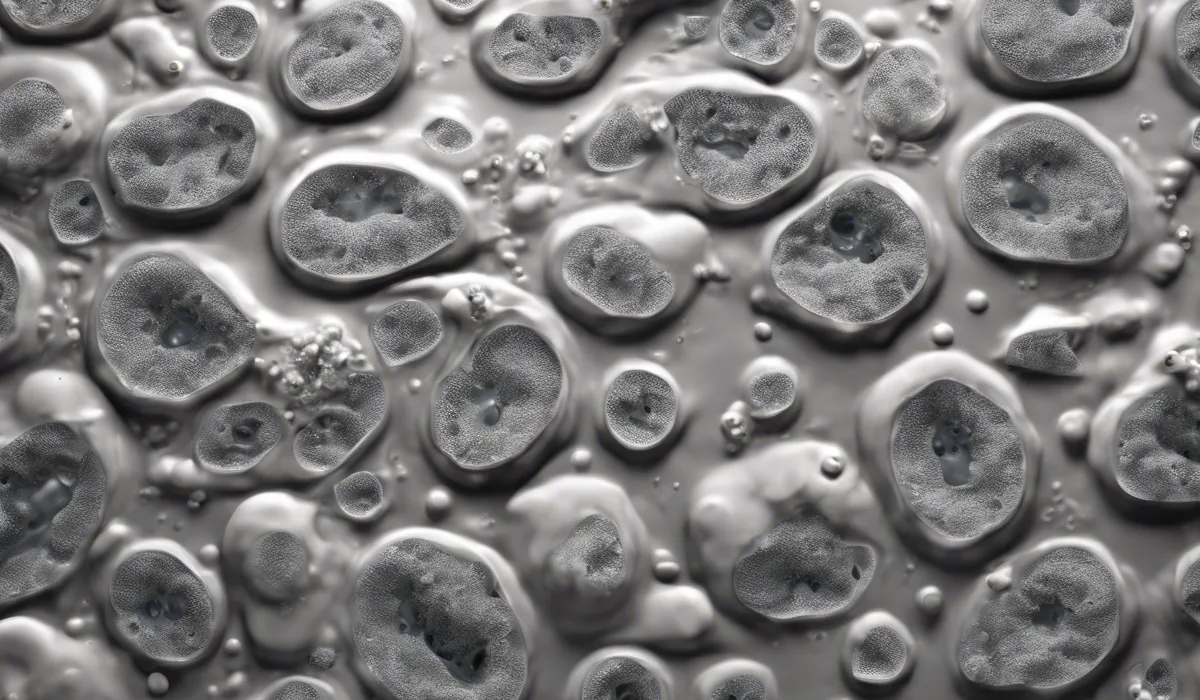Molds reproduce by producing tiny spores that are released into the air. These spores are analogous to seeds, but much smaller and can travel long distances. When conditions are right—warmth, moisture, and nutrients—these spores germinate, growing into new mold colonies.
Basics of Mold Reproduction

Mold Definition and Characteristics
Mold is a type of fungus that can be found both indoors and outdoors. Unlike plants that rely on photosynthesis, molds obtain energy by decomposing organic matter.
They play a crucial role in the environment by breaking down dead material. Molds come in various shapes, sizes, and colors, and they thrive in moist, warm environments.
Mold Life Cycle
The life cycle of mold begins with a spore, which is a tiny, lightweight cell that can travel through the air.
When a spore lands on a suitable surface with the right conditions, it germinates and grows into a network of cells called hyphae. As these hyphae spread out, they form a colony known as a mycelium.
This mycelium can eventually produce new spores, completing the cycle.
Types of Mold and Common Habitats
There are countless types of mold, but some of the most common include Aspergillus, Cladosporium, and Stachybotrys (often called black mold).
Molds can inhabit various environments such as damp basements, bathrooms, kitchens, and areas with water damage.
They can grow on a multitude of surfaces, from wood and paper to insulation and carpet.
Mold Spores: The Seeds of Mold

Description of Mold Spores
Mold spores are incredibly small, often invisible to the naked eye. They are the reproductive units of mold, much like seeds are for plants. These spores are hardy and can survive harsh conditions, lying dormant until they find the right environment to grow.
How Spores Are Generated and Released?
Molds produce spores as part of their reproductive process. These spores form within the mold’s fruiting structures and are eventually released into the air.
The lightness and small size of spores allow them to be carried by air currents, spreading the mold to new locations.
Role of Spores in Mold Reproduction
Spores play a key role in mold reproduction. They are the primary means by which mold spreads and colonizes new areas.
When a spore lands in an environment that provides moisture, warmth, and nutrients, it can germinate and begin forming a new mold colony.
Conditions That Facilitate Spore Dispersal and Germination
For spore dispersal and germination to occur, certain conditions must be met. Mold spores need moisture, warmth, and a food source to start growing. Areas with high humidity or water damage are especially prone to mold growth.
Ensuring good ventilation and keeping indoor humidity levels low can help prevent mold spores from germinating.
Asexual and Sexual Reproduction in Mold
Molds can reproduce asexually through several methods. Sporulation is the process by which molds create spores in the fruiting bodies.
Fragmentation occurs when a piece of the mold hyphae breaks off and starts a new colony. Budding is a process similar to yeast reproduction, where a new cell grows out of the parent cell.
Mitosis in Mold
During asexual reproduction, mold cells undergo mitosis, where one cell divides into two identical cells. This process allows for rapid growth and spread of the mold colony because it does not require another organism for reproduction.
Advantages of Asexual Reproduction for Mold Proliferation
Asexual reproduction offers several advantages for mold. It is a quick and efficient way to spread, especially in environments that are ideal for mold growth.
This type of reproduction allows for the rapid colonization of new areas, ensuring the survival of the mold species.
Sexual Reproduction
Sexual reproduction in molds involves the fusion of hyphae from two different mold strains.
This process begins with plasmogamy, the fusion of cell cytoplasm. Karyogamy follows, which is the fusion of cell nuclei. Finally, meiosis occurs, leading to genetic recombination and the production of spores with new genetic material.
Genetic Diversity Through Sexual Reproduction
Sexual reproduction provides molds with genetic diversity. This diversity is crucial for the adaptability and survival of mold species, as it allows them to cope with changes in the environment and resist harmful mutations.
Conditions Under Which Sexual Reproduction Occurs
Sexual reproduction in molds typically occurs under stressful conditions or when resources are limited.
These circumstances force molds to combine genetic material with other strains to increase their chances of survival.
Ecological Impact of Mold Reproduction Mechanisms
The reproductive strategies of mold have significant ecological impacts. By breaking down organic matter, they recycle nutrients back into ecosystems.
The adaptability of molds through sexual reproduction also contributes to their role in the environment, as it helps maintain their populations and the balance of ecosystems.
FAQs About Mold Reproduction
How do mold spores reproduce?
Mold spores reproduce asexually by releasing tiny spores into the air, which can then germinate under the right conditions of warmth, moisture, and nutrients.
Can mold spores travel far distances?
Yes, mold spores are much smaller than seeds and can travel long distances through the air.
What conditions are needed for mold spores to germinate?
Mold spores require warmth, moisture, and nutrients to germinate and grow into new mold colonies.
Do all mold spores successfully germinate?
Not all mold spores will germinate; they need the proper environmental conditions to do so. Without these conditions, the spores will remain dormant.
Is the reproduction of mold harmful to humans?
Mold reproduction can be harmful to humans if the spores are inhaled in large quantities, as they may cause allergic reactions or respiratory issues.
Final Thoughts
Molds propagate by releasing microscopic spores into the air, comparable to seeds but much tinier.
These spores can journey over large distances and, when encountering favorable conditions—adequate warmth, moisture, and nutrients—will germinate and develop into new mold colonies.
